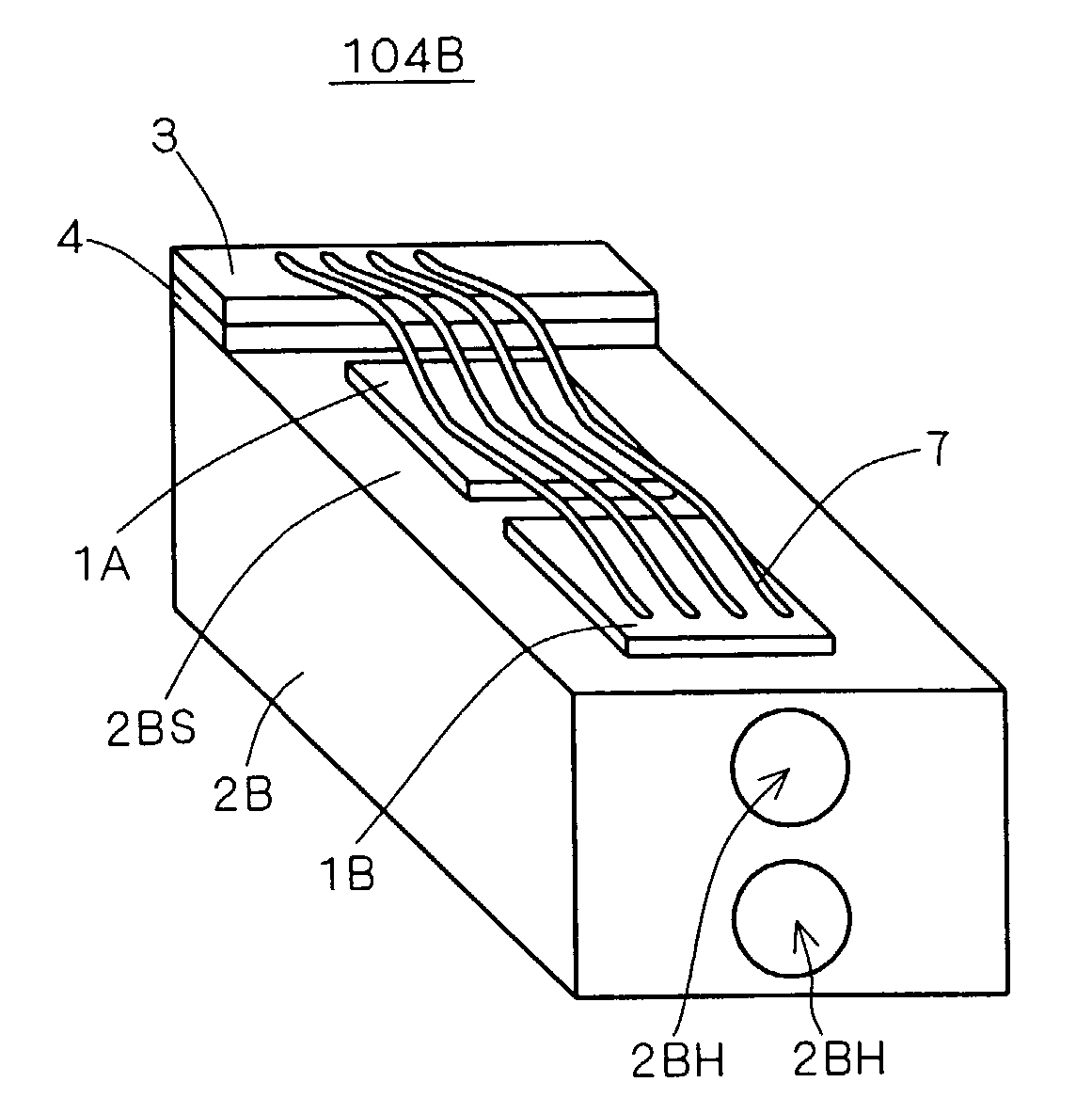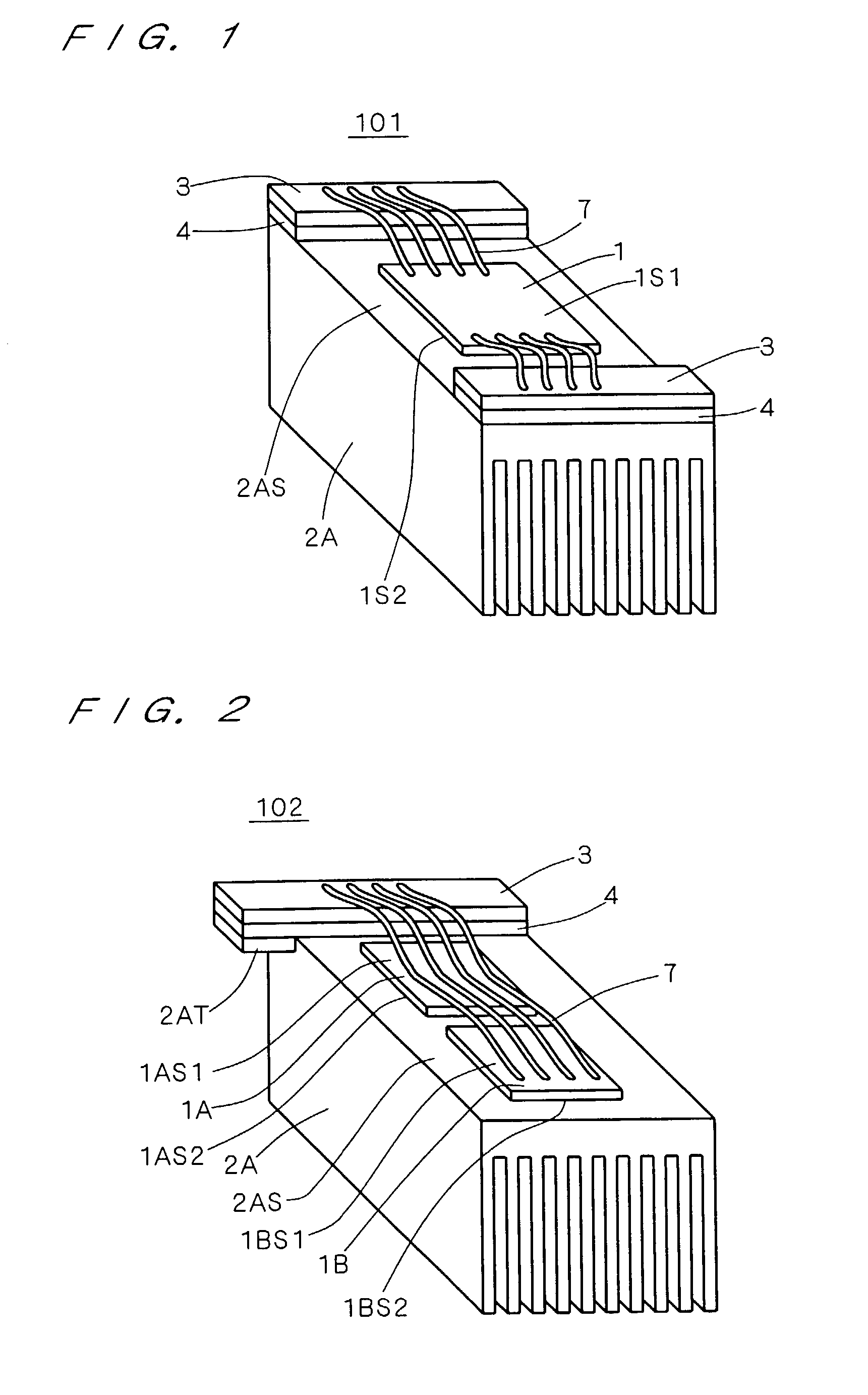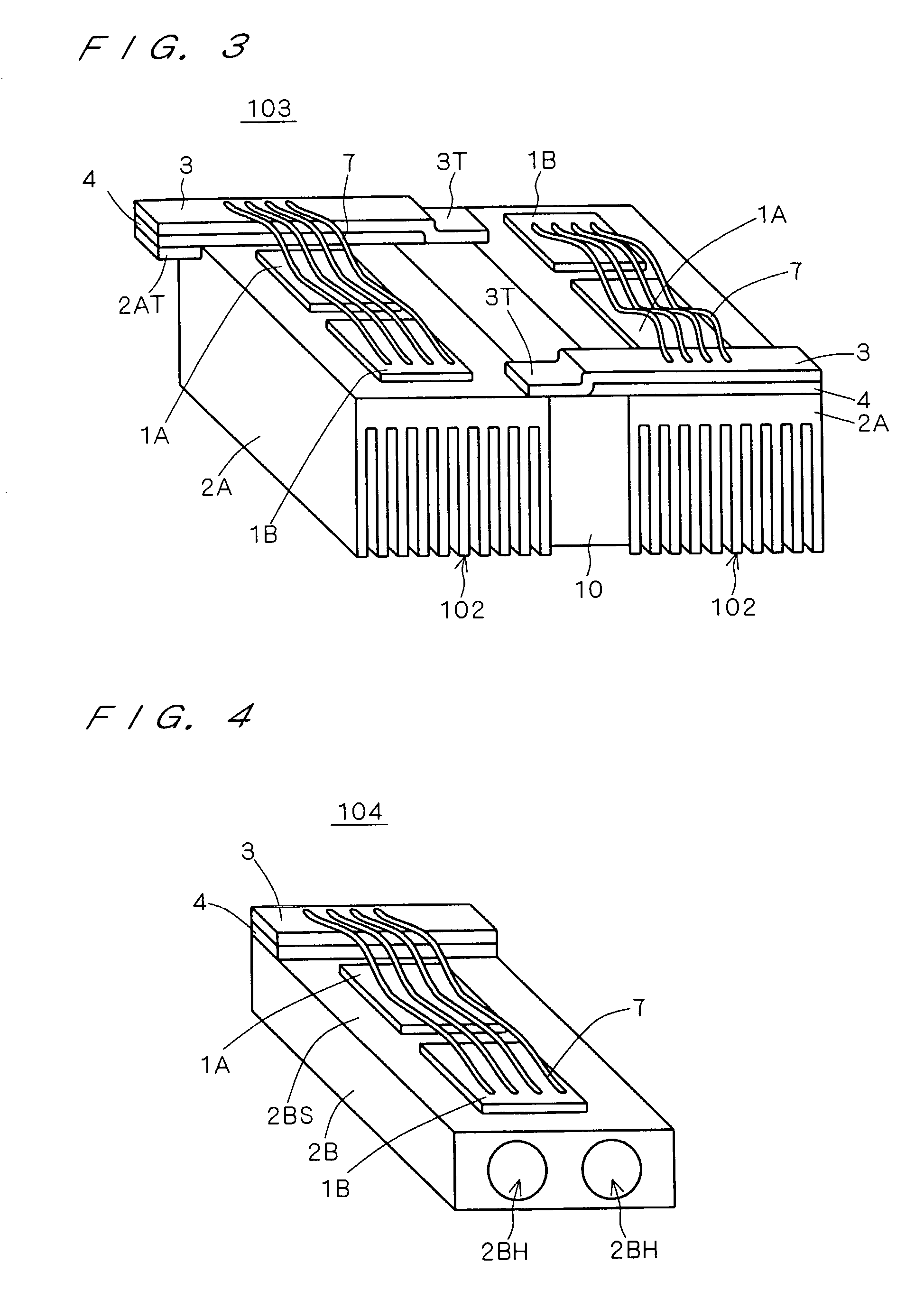Power module
a power module and power technology, applied in the direction of power conversion systems, semiconductor/solid-state device details, power conversion systems, etc., can solve the problems of reducing the longevity of the power module, reducing heat transfer, and increasing the size of the heat sink b>2/b>ap or b>2/b>bp, so as to improve the cooling capacity of the heat sink, improve the reliability of the power transducer, and reduce the effect of power loss
- Summary
- Abstract
- Description
- Claims
- Application Information
AI Technical Summary
Benefits of technology
Problems solved by technology
Method used
Image
Examples
first preferred embodiment
[0085]FIG. 1 is a schematic external view of a power module 101 according to a first preferred embodiment. As shown in FIG. 1, the power module 101 comprises a power semiconductor device (e.g., free-wheeling diode or IGBT) 1 formed for example of a silicon (Si) substrate, a heat sink 2A, electrodes 3, insulating layers 4, and wires 7. For the sake of simplicity, the details of the power semiconductor device 1 is not illustrated in FIG. 1.
[0086]Specifically, the power semiconductor device 1 is disposed in immediate or direct contact with the heat sink 2A. The power semiconductor device 1 has main surfaces 1S1 and 1S2 corresponding to the main surfaces of the above-mentioned silicon substrate, in each of which an electrode is formed (not shown). One main surface (hereinafter referred to as “rear surface”) 1S2 or the electrode (hereinafter referred to as “rear electrode”) formed in the rear surface 1S2 is for example soldered onto a plane surface 2AS of the heat sink 2A.
[0087]Here “dis...
second preferred embodiment
[0092]FIG. 2 is a schematic external view of a power module 102 according to a second preferred embodiment. As shown in FIG. 2, the power module 102 comprises a free-wheeling diode 1A and an IGBT 1B, serving in a pair as the aforementioned power semiconductor device 1; the heat sink 2A; the electrode 3; the insulating layer 4; and the wires 7. Components similar to those previously described are denoted by the same reference numerals and they are considered to be supported by the foregoing description.
[0093]The free-wheeling diode 1A has a front surface 1AS1 and a rear surface 1AS2 corresponding to the aforementioned front and rear surfaces 1S1 and 1S2, respectively and also has a front electrode and a rear electrode (not shown). Similarly, the IGBT 1B has a front surface 1BS1 and a rear surface 1BS2 corresponding to the aforementioned front and rear surfaces 1S1 and 1S2, respectively and also has a front electrode and a rear electrode (not shown)
[0094]Specifically, the heat sink 2A...
third preferred embodiment
[0098]FIG. 3 is a schematic external view of a power module 103 according to a third preferred embodiment. The power module 103 has such a configuration that the two power modules 102 are coupled together through an insulating member 10. The insulating member 10 may be an epoxy resin, injection molded plastic, or the like.
[0099]In the power module 103, the electrode 3 of each power module 102 extends to the other power module 102 and is electrically connected to (e.g., soldered to) the heat sink 2A of the other power module 102 (cf. protrusions 3T).
[0100]The power module 103 can easily be produced since its circuit configuration is such that the two prepared power modules 102 are merely combined together. The use of the compact and lightweight power modules 102 allows a reduction in the size and weight of the power module 103. Alternatively, three or more power modules 102 may be combined.
[0101]The diodes 1A and the heat sinks 2A may directly be connected with each other by the wire...
PUM
 Login to view more
Login to view more Abstract
Description
Claims
Application Information
 Login to view more
Login to view more - R&D Engineer
- R&D Manager
- IP Professional
- Industry Leading Data Capabilities
- Powerful AI technology
- Patent DNA Extraction
Browse by: Latest US Patents, China's latest patents, Technical Efficacy Thesaurus, Application Domain, Technology Topic.
© 2024 PatSnap. All rights reserved.Legal|Privacy policy|Modern Slavery Act Transparency Statement|Sitemap



